HOW TO MAKE A SAUNA HOTTER —
TIPS, BENEFITS AND MORE
With their time-honored tradition of promoting relaxation and holistic wellness, saunas offer the body a rejuvenating and purifying experience.
As a sauna enthusiast, you may have grown accustomed to the regular sauna temperature. If you seek to elevate the sauna's heat level for personal preference, enhanced therapeutic effects, or to enrich your experience, you may ponder how to make a sauna hotter.
We have some creative tips and tricks to help you reach those satisfyingly high temperatures. Say goodbye to lukewarm experiences and hello to a sauna that's hot, steamy, and ready to work its charm.
How to Make a Sauna Hotter
Is your sauna not reaching the desired temperature? Your sauna should generate enough heat to fully experience relaxation, detoxification, improved athletic performance, and muscle recovery.
Some issues can be resolved through DIY methods and instructional videos, while others may require professional assistance. If you need help deciding which aspect to address, begin with essential home remedies and gradually progress to more complex solutions.
You can identify and resolve the problem affecting your sauna's temperature by systematically troubleshooting each potential issue.
Why Isn't my Sauna Getting Hotter?
Before explaining tips and tricks to increase the sauna temperature, let's look at some of the problems causing this issue.
Factors affecting your sauna temperature could include:
-
Improper ventilation
-
A malfunctioning heating element
-
A broken thermostat
-
Incorrect settings
-
Poor insulation
-
Improperly piled stones
The solution to your problem could lie in any one of these factors. Check for these preliminary factors when trying to increase the sauna temperature.



Tips to Increase Sauna Temperature
Sauna sessions are best observed when you can tweak the temperature to your liking. These straightforward and powerful techniques can help you increase your sauna temperature.
Discover how to make a sauna hotter with simple and effective tips:
Inspect Power Output
It's essential to consider whether the sauna heater has an appropriate power output for the size of your sauna room. The size of your sauna, including its volume, along with factors like ventilation, insulation, and the presence of windows all contribute to determining the required power of the heater.
If the heater's power output is adequate for your sauna's specifications, it'll heat the space effectively.
Adjust the Settings
Placing a heater five to seven inches off the floor is often recommended to achieve even heat distribution in a room. As warm air rises, cooler air replaces it, creating a convection current.
Placing the heater closer to the floor allows the rising warm air to spread more evenly across the room before reaching the ceiling.
Investigate the Thermostat
To ensure your sauna's thermostat is functioning correctly, follow these guidelines:
-
Position the thermostat sensor one to two feet from the heater to avoid direct heat influence.
-
Place the sensor approximately one inch from the ceiling to capture the warmest air in the sauna.
-
Recalibrate the thermostat if necessary by following the manufacturer's instructions.
-
If recalibration doesn't resolve the issues, consider replacing the thermostat with a compatible model.
Maintaining the correct position and calibration of the sauna thermostat ensures accurate temperature control — providing a safe and enjoyable sauna experience.



Add Insulation
Insulating your sauna walls to prevent heat from escaping is a key factor in learning how to get a sauna hotter. Insulating the walls, ceiling, and door with appropriate materials like mineral wool or ceramic fiber helps prevent heat from escaping.
Sealing gaps, cracks, and windows further improve insulation. With adequate insulation, your sauna will be better equipped to maintain a higher temperature, allowing you to enjoy a more intense and invigorating sauna experience.
Preheat the Sauna
Preheat the sauna for 30 to 45 minutes for traditional saunas and 10 to 15 for infrared ones. This duration allows the rocks inside the sauna to become thoroughly heated, which is essential for a comfortable and hot sauna environment.
If you don't preheat the sauna sufficiently, the rocks won't retain enough heat when water is poured over them. As a result, the sauna temperature may not rise to the desired level, leading to a subpar sauna experience.
If you're questioning how to make your wood-burning sauna hotter, simply add more wood to the stove. Regarding the choice of wood, certain types — like birch — are more effective at heating than others, like pine wood.
Increase Humidity
Humidity doesn't increase temperature directly. It affects how hot the sauna feels because it hampers sweat evaporation, which cools the body. To increase humidity, simply add water to the rocks.
It feels hot because sweat doesn't evaporate quickly in high humidity, and the moisture in the air slows down the cooling process making the temperature seem higher than it is.
Exercise Beforehand
Engage in physical activity before entering the sauna to raise your body temperature. Keep your sauna session short to avoid dehydration and excessive sweating.
Adjust Vents
Open the vents while the sauna heats up to avoid triggering the high-limit sensor too early. Close them afterward to retain heat. If the sauna becomes stuffy, briefly open the vents for fresh air.
Pick the Right Stones
Replace sauna stones with dark-colored, medium-sized stones with a rough texture and no cracks. Rinse the stones and combine medium and small stones to fill gaps, allowing adequate airflow.
Certain types of rocks are more suitable for saunas. These rocks are typically made of materials like:
-
Vulcanite,
-
Olivine-diabase
-
Peridotite
-
Olivine
Ceramic and volcanic stones are also commonly used. These rocks are carefully selected for their ability to withstand the high temperatures in saunas and efficiently retain heat creating a comfortable and enjoyable sauna environment.
It's crucial to avoid using random rocks from sources like rivers or your backyard. These rocks may not heat up well in the sauna and can pose a safety hazard. River rocks, in particular, can be problematic as they may contain trapped water. When heated, this water can cause the rocks to crack or even explode, which is extremely dangerous.
Maintenance and Cleaning
Over time, saunas can accumulate dust, debris, and mineral deposits, affecting their heating capabilities. Regular cleaning and maintenance can help you learn how to make your sauna hotter, ensuring a more intense and satisfying sauna experience.



Do Hotter Saunas Have More Benefits?
Hotter saunas can offer more health benefits. After all, more heat can translate into a better sauna session.
However, your comfort level matters most when deciding on the sauna temperature. As long as you're sweating, you'll get the health benefits no matter the temperature. It doesn't matter if you spend more time in a more relaxed sauna or less time in a hotter one – you'll still sweat the exact amount and enjoy the same benefits.
Focus on finding a temperature that feels good to you and makes you sweat, and you'll be good to go.
Sauna: How Hot is Too Hot?
As we've stated so far, it's crucial to prioritize safety and stick to a temperature range that won't put you at risk.
If you're wondering how to make your sauna hotter, you must find the right balance.
Sometimes, it's impossible to precisely determine a sauna's temperature, mainly because it depends on the type of sauna you choose and its specific characteristics.
The following table illustrates the appropriate sauna temperatures for different types of saunas:

It's important to know that traditional saunas didn't have thermostats to control the temperature in the old days. Instead, people relied on their senses to gauge the heat, making it hard to precisely figure out how hot saunas used to be.
Today, we have modern equipment, so following safety guidelines for temperature control is essential to ensure a risk-free sauna experience.
Tips to Avoid Getting Burned or Overheated in the Sauna
Saunas are an excellent way to relax and unwind, but taking precautions is essential to avoid getting burned or overheating.
By following our simple tips on how to safely increase the sauna's temperature, you can enjoy the heat and the associated benefits without any worry.
Start with a Lower Temperature
If you're new to saunas or need help handling the heat, it's best to begin with a lower temperature. Gradually increase the temperature as you become more accustomed to the heat.
Stay Hydrated
Ensure you drink plenty of water before, during, and after your sauna session. This will keep you hydrated and help regulate your body temperature.
Limit Your Time
It's important not to spend too much time in the sauna. Ideally, limit your sessions to 10-15 minutes and take breaks in between to allow your body to cool down.
Pay Attention to Warning Signs
If you start feeling lightheaded, dizzy, or generally uncomfortable, exit the sauna immediately and cool down. These signs indicate that your body may be overheating.
Take Precautions
Place a towel or a mat down before sitting or lying down in the sauna to prevent direct contact with hot surfaces. Using a towel as a barrier between your skin and the hot benches or walls is a good idea since it acts as proper insulation between you and the hot surface. You can also wear something light and flowy to stay comfortable.
Listen to Your Body
Everyone's tolerance to heat varies, so listening to your body's signals is crucial. Adjust the temperature and duration of your sauna session accordingly. If you start feeling uncomfortable, leave the sauna right away.
The FAQ section
What type of sauna is the hottest?
The hottest type of sauna is typically considered the traditional Finnish sauna, also known as a dry sauna.
Does a sauna dry out hair?
Yes, the high heat in a sauna can contribute to drying out hair.
Who can not use saunas?
Individuals with certain medical conditions, such as uncontrolled high blood pressure, heart problems, respiratory conditions, and pregnancy, should avoid using saunas.



Conclusion: How to Make Sauna Hotter
By using the sauna more frequently and exploring ways of increasing the sauna temperature, you can make your sauna experience hotter and more enjoyable. Remember to follow our recommended time limit of around fifteen minutes.
Safety should always be a top priority, so adhere to the guidelines and precautions we mentioned in this article. Doing so allows you to indulge in a more intense sauna session without concerns.
If you're looking for the perfect home-use sauna, you can find them at My Sauna World. We host a collection of various indoor, outdoor, and traditional saunas. Have a question? Contact us, and our team will be ready to help you out!
SIGN UP. SAVE BIG.
Subscribe to be the first to know about our special monthly sauna sales, sent right to your inbox.

About the Author
Adam Fromson
Adam Fromson, co-founder of My Sauna World, loves saunas and their transformative health benefits. With years of experience exploring sauna culture and its impact on health and wellness, Adam is passionate about helping others discover the life-changing benefits of saunas for themselves.
Let customers speak for us
from 385 reviews
Good communication, easy delivery, easy set up, easy operation, great value. Recommended!
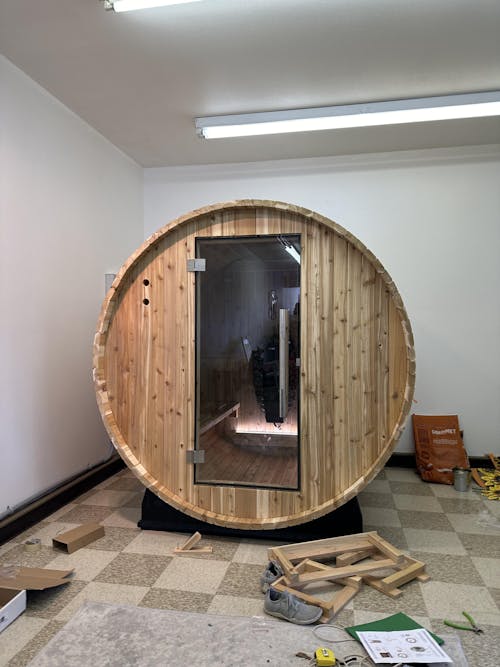
We ordered the 4 person barrel sauna and love it! We wanted a little extra space for the 2 of us/guests and it’s great. We could definitely fit 4 people in it if we needed. We use it every single day. It took about 10 weeks to get here because they build it specifically for the order. Putting the barrel together was fairly easy with 2 people. The electrical and the heater definitely required an electrician to install as we could have not done it alone.
We ordered the biggest heater (harvia spirit 8kw) and it heats up the sauna in about 15 mins inside our 40-50° garage. Overall this style of sauna is hotter and you sweat a lot faster than in an infrared sauna. I truly 10/10 recommend!
Pic is of us in the middle of building it.
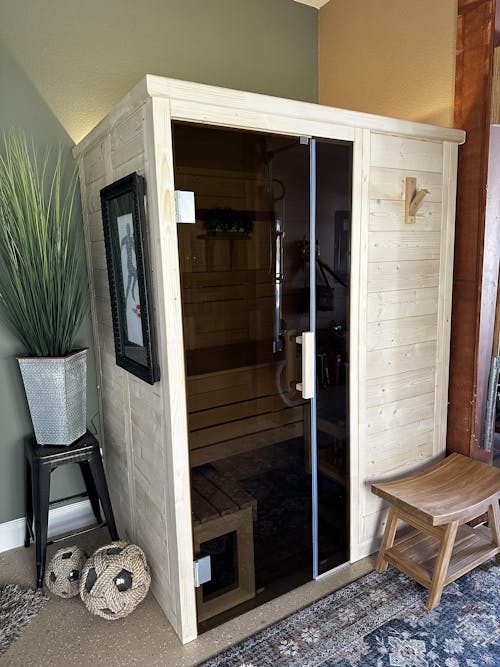
Took me about 6 hours over 2 evenings to assemble almost all by myself. Had a pro run a new circuit from my panel. Very well made and assembly was straightforward. Heater is well sized and reaches operating temperature in under 30 minutes.
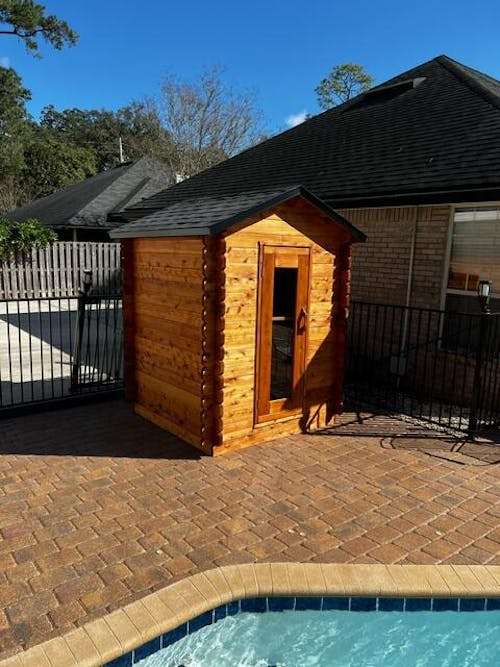
Great sauna very easy to assemble
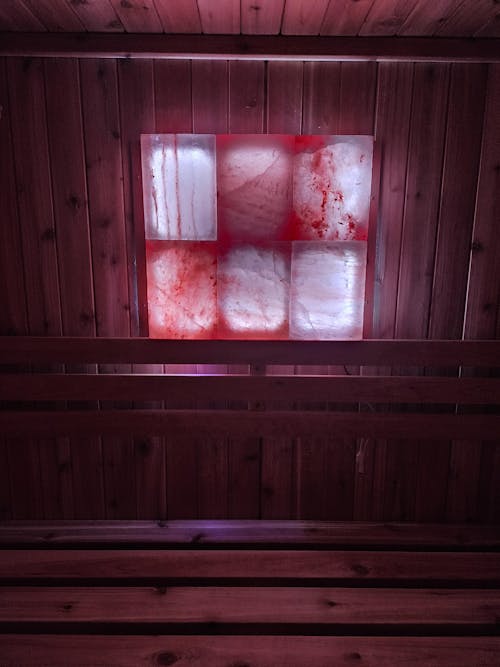
The salt panel was a great addition to our Madison Sauna. It has excellent grain which is accented by the amazing color lights that glow through the panel. Also when you hit the rocks with a splash of water you can feel the heat bounce off the panel. Great addition if you are considering this option.
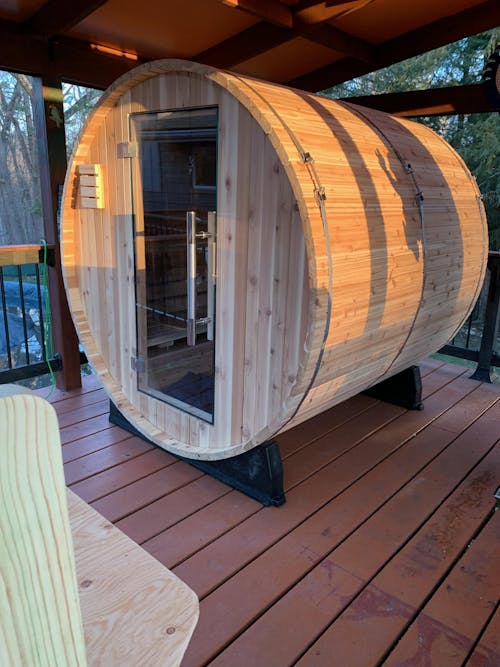
We can say enough about Sauna World there customer support is great! Our Pinnacle Sauna from Almost Heaven is epic.
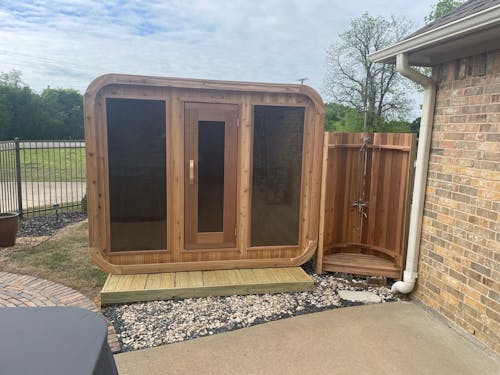
The finish and quality is outstanding and it was quick and easy to assemble.
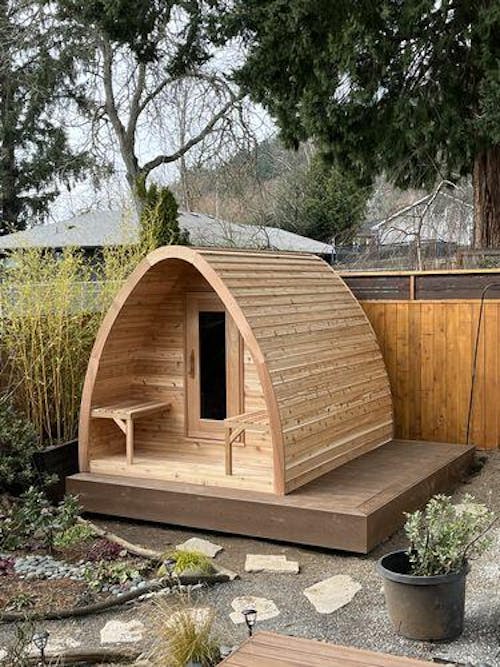
We are thrilled with our mini pod!! It came well shipped and our friend assembled it in 11 hours! Wow! We cannot wait to get healthy and sauna it up!
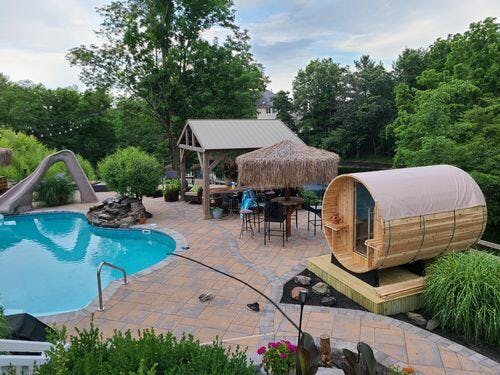
Beautiful sauna!!! Much easier than I expected to assemble, took a total of 4 hours. Can't wait to get warm by the pool on those cool evenings. Customer service was excellent..

Purchased a 2 person Almost Heaven barrel sauna and were delighted with the product. The order process was quick and easy, the sauna arrived on-time, installation was simple, following the provided instructions, and the sauna is extremely high quality. We’ve used it daily for over 2 weeks and quite frankly I don’t know how we lived without it. If I had it to do over again I wouldn’t change a thing... except maybe purchasing a 4 person model to easier share with friends!
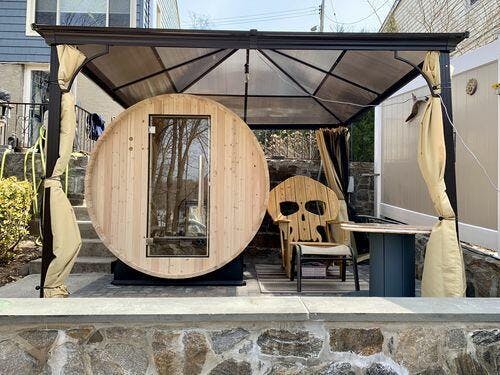
Great Customer Service and a breeze to put together.Excellent shipping and the Sauna is top notch, couldn’t be happier






























